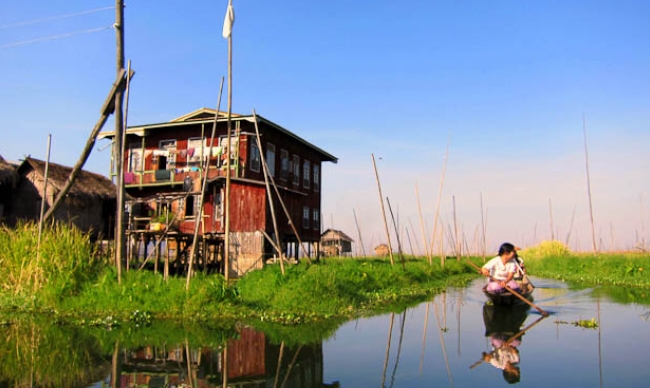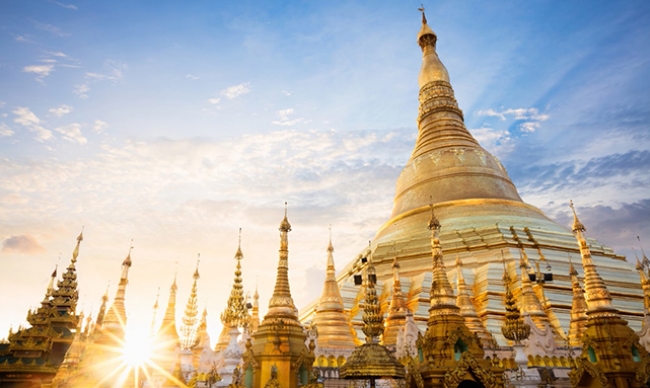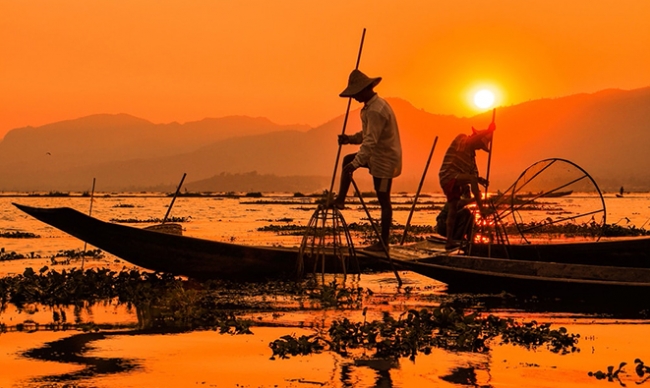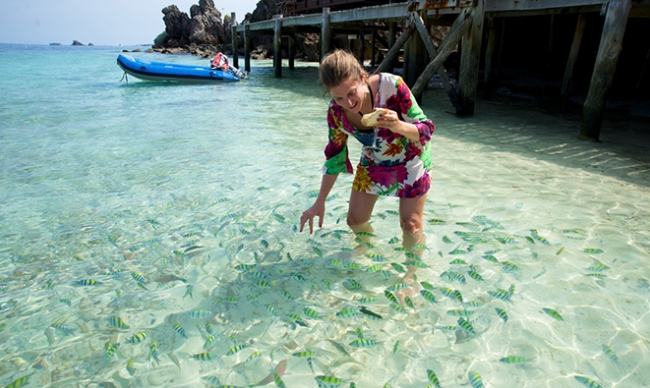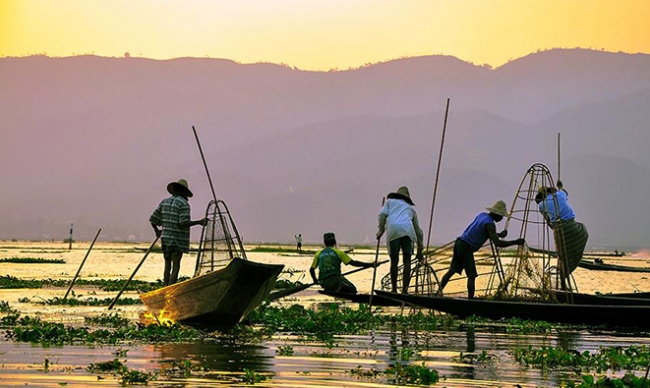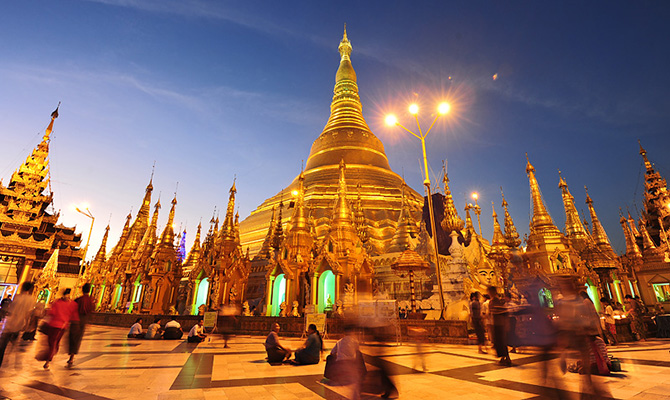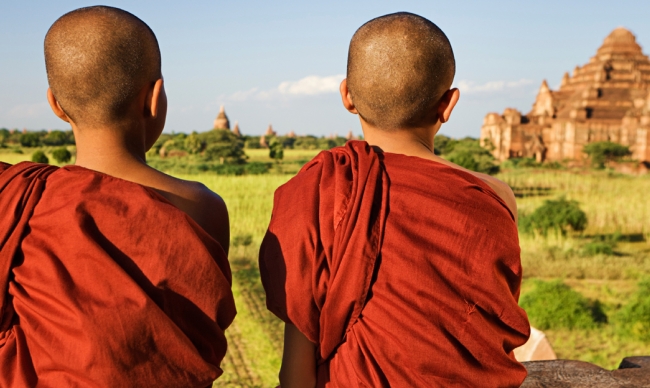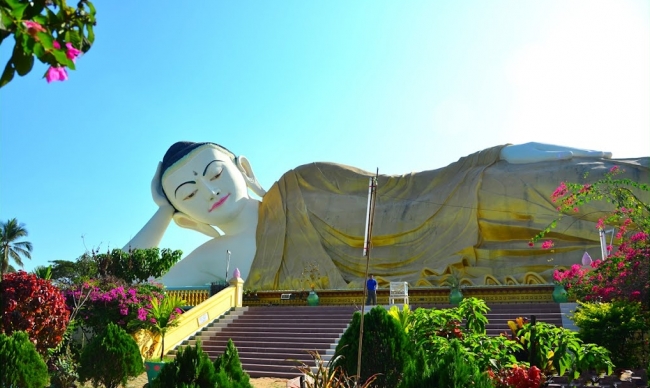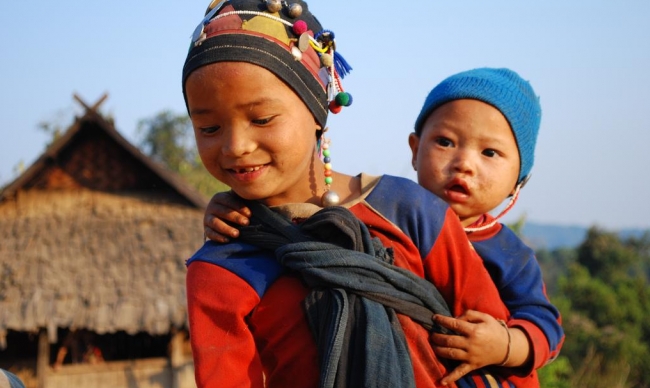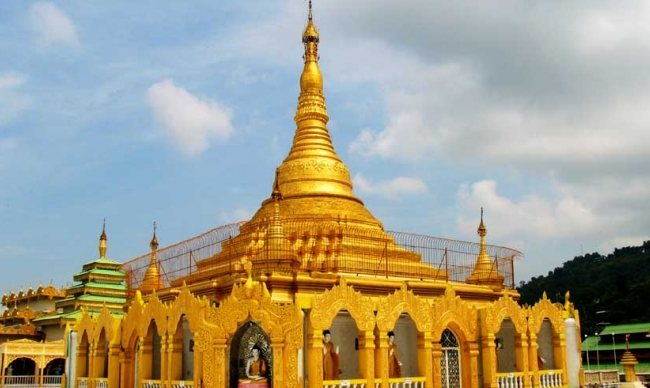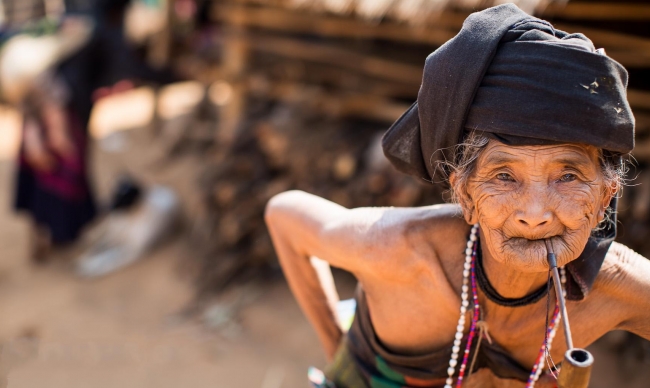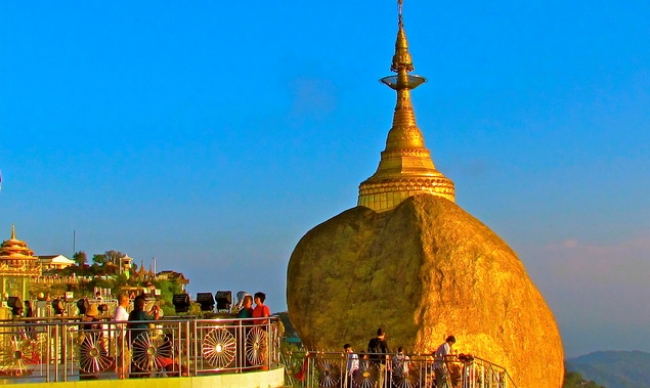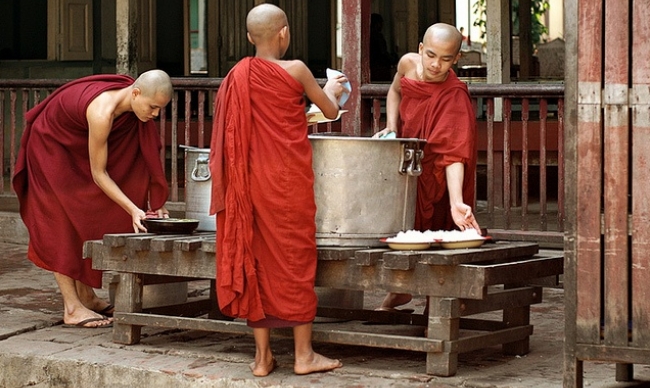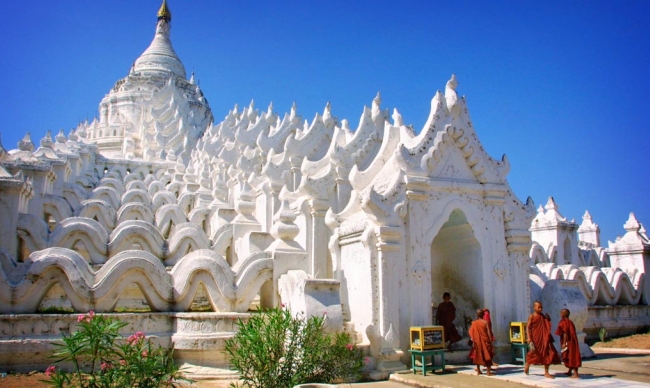Quick Facts:
- Location: 30 km south of Taunggyi
-
Status: Myanmar’s second largest freshwater lake
-
Population: about 150 000
-
Area: 116 square km
-
Best time to visit in a year: from October to Mar
-
Among the most picturesque attractions of Myanmar and even in Southeast Asia as well, known as “Venice of the East”
Being a mesmerizing area of natural beauty as well as cultural diversity, the lake of Inle is absolutely an attractive destination for your tour in Shan State, Myanmar. The attraction is so famous that if you talk the word 'Inle', immediately people will think of 'Inle Lake'.
At an altitude of 880 meters and an estimated surface area of 116 square kilometers, Inle Lake is the one of the highest and the second largest freshwater lake in Myanmar. In addition, Inle is the habitat of a considerable number of endemic species with over nine species of fish and twenty species of snails which are nowhere else in the world to be found. Also, from November to January, the lake houses about 20,000 black and brown head migratory seagulls.
There are about 150,000 people living in four cities bordering the lake of Inle, in several small villages along the lake shores, and on the lake itself, making Inle a multi culture area – a mix of predominant Intha with ethnicities of Shan, Taungyo, Pa-Oh, and others. Such diversity in local lives leaves good impressions on you, through the images of fishermen doing their works at sunset, women in canoe making bamboo fences, Buddhist monks in Thakong Pagoda, and especially, young long necked Padaung tribe women wearing about 15 neck rings in the belief that long necks make them beautiful. Plus, there are other sceneries similar to those of rural areas such as men riding water buffaloes, oxen pulling carts along the road and women in their traditional dresses. Most of Inle’s habitants are Buddhists, living in simple stilts houses made of wooden and woven bamboo. Traditionally, transportation on the lake is by small boats, or by larger boats fitted with single cylinder inboard diesel engines.
Right on Inle Lake, all activities of lives can take place as local people subsist in harmony with the surrounding nature. They hold floating markets where locals buy and sell goods in their boats and practice a distinctive method of fishery which makes them famous: standing with one leg on the stern and using the other leg to row – letting their hands always free to scoop fish from the bottom of lake into their large bamboo nets. Still, this unique way of rowing is only practiced by Intha men, and Intha women row in the customary style, using the oar with their hands and sitting across legged at the stern. Furthermore, Inle Lake’s locals also have developed a unique form of gardening: floating gardens created from mud and reed. Farmers gather weeds from the deeper parts of lake; over the years, a network of interwoven seaweed and hyacinths creates a thick layer of humus, attached to bamboo poles. The gardens rise and fall with changes in the water level and hence are resistant to flooding. The constant availability of nutrient-laden water results in the gardens being incredibly fertile. These gardens are filled with tomatoes, cauliflowers, aubergines and different flowers.
Coming to Inle Lake in October and November, tourists have opportunities to take part in Phaung Daw Oo Festival which lasts for almost three weeks, closely followed by the Thadingyut Festival of lights. In Phaung Daw Oo festival, locals conduct a traditional event of boat racing; each boat is a team of dozens of leg-rowers wearing Shan dress.
Inle cuisine is different from Shan cuisine because it connects closely with its local natural products. The most renowned dish of Inle is Htaminjin (fermented rice) - a rice ball kneaded with fish salad, tomato paste, smashed potatoes, decorated with fried onion, tamarind sauce, crispy garlic, and served with Hnapyan jaw (twice-fried Shan tofu).
Tourists may take some handmade goods as the gifts for friends in the markets around the lake area, typically tools, carvings, other ornamental objects, and textiles. Like in other cities in Myanmar, there are several Buddhist sites around Inle which are also destinations in a lot of tours, such as Phaung Daw Oo Pagoda and Ngaphe Kyaung Monastery.
